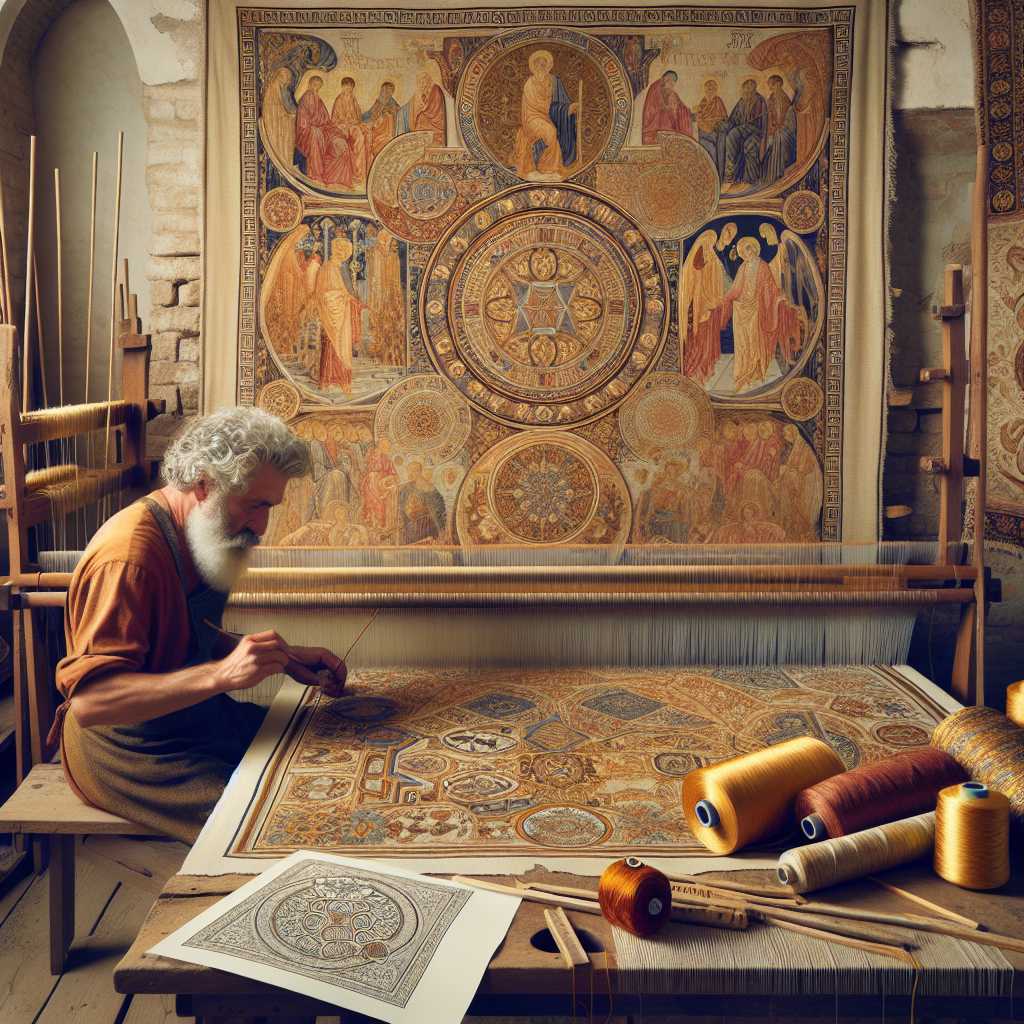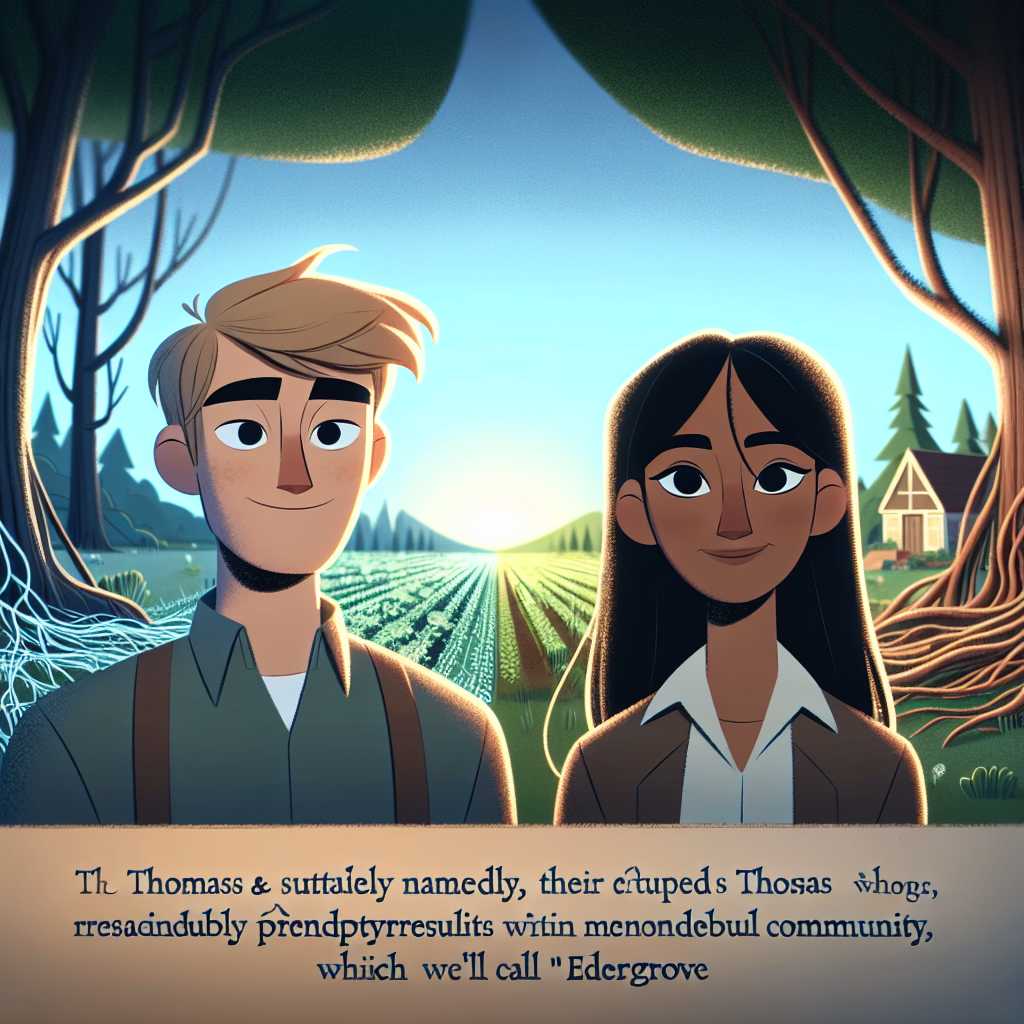
As rumor of Andronikos’ talent spread through the empire, it reached the ears of the Empress Theodora, who commissioned a tapestry grander than any before, to be the centerpiece in the Great Palace of Constantinople. And so, Andronikos set forth, driven by inspiration and the desire to create his masterpiece, knowing it might secure his family's fortune for generations.
Hewn from threads of gold and silver, Andronikos worked day and night, his fingers flying across the loom with the grace of a dancer. Each thread he wove told a tale; each color he chose sang a song of the empire's glory. The artisan poured his soul into his craft, and as months turned to years, the tapestry began to take shape.
But as fate would have it, trouble stirred in the east. Persians, envious of the Byzantine splendor, amassed at the empire’s border. The Emperor sent his finest generals and legions, but the threat loomed large and the shadow of war darkened the lands.
One fateful night, as Andronikos labored alone by candlelight, a stranger cloaked in darkness entered his workshop. The stranger’s eyes glinted with the wisdom of the ages, and his voice whispered like the wind through the cypress trees.
“Andronikos,” he spoke, with mystery lacing his tone, “your hands weave magic into fabric. Yet, tell me, will your tapestry withstand the fire of war?”
Andronikos, taken aback by the stranger’s ominous question, replied, “All art is but a reflection of life, and like life, it is fragile. But I believe it is the beauty we create that outlasts empires and the tumult of time.”
The stranger nodded, pulling from his cloak a spool of thread that shimmered like the stars in the heavens above. “Use this in your work, and your tapestry will be remembered as long as the stars themselves endure.”
With those words, the stranger disappeared as suddenly as he had arrived, leaving behind the spool of enigmatic thread. Andronikos, bewitched by its luster, wove the thread into the tapestry, imbuing his work with a celestial glow that seemed to breathe life into the scenes depicted.
After seven long years, the tapestry was complete, unfurling like a scroll of history across Andronikos’ workshop. Mountain-ringed cities and silvered seas came alive under the artistry of his hands, a narration of Byzantine greatness threading through the warp and weft of the fabric. It was not just a tapestry; it was a paean to the soul of an empire.
With pomp and ceremony, the tapestry was brought to the Great Palace and unveiled before the Emperor and Empress, the courtiers and dignitaries gathered around, their eyes wide with awe.
“Behold, the chronicle of our empire, eternalized by the hand of Andronikos!” proclaimed Emperor Justinian, his voice echoing beneath the gilded arches.
The crowd erupted in adulation, and Andronikos’ name was exalted alongside those of the empire’s greatest heroes and sages. But even as the Empire celebrated, news of the Persian advance dampened the spirit of splendor.
War erupted like wildfire, spreading from town to town, field to field. The Great Palace itself came under siege, and in the chaos that ensued, the tapestry was said to have been lost, consumed in the flaming jaws of conflict.
Years passed and the once-great Byzantium lay ravaged by war's greedy hands, its glory crumbled to dust and memories. Andronikos himself had vanished into the annals of time, his fate as mysterious as the origin of the starlit thread.
However, legends whispered among the people spoke a different tale. It was said that the tapestry had not been destroyed but had been spirited away by the same enigmatic stranger who had provided the celestial thread. It was hidden in a place where neither time nor war could touch it, waiting to be found when the empire needed its splendor once more.
Centuries turned, and the tale of Andronikos and his tapestry became a tale told by the story-tellers who wandered from town to town, their voices carrying the echoes of Byzantine grandeur and the hope that one day the tapestry will be discovered, a living testament to an artist's dream and the enduring spirit of a lost empire.
The tapestry’s whereabouts remain a mystery to this day, yet some believe that the loom of Andronikos continues to weave somewhere beyond the veil of time, the artisan's fingers crafting new legends for those who dare to dream of beauty amidst the ruins of the past.
And so the story lives on, transforming with each telling, the threads of truth and fiction intertwining like the colors on Andronikos' eternal loom.










